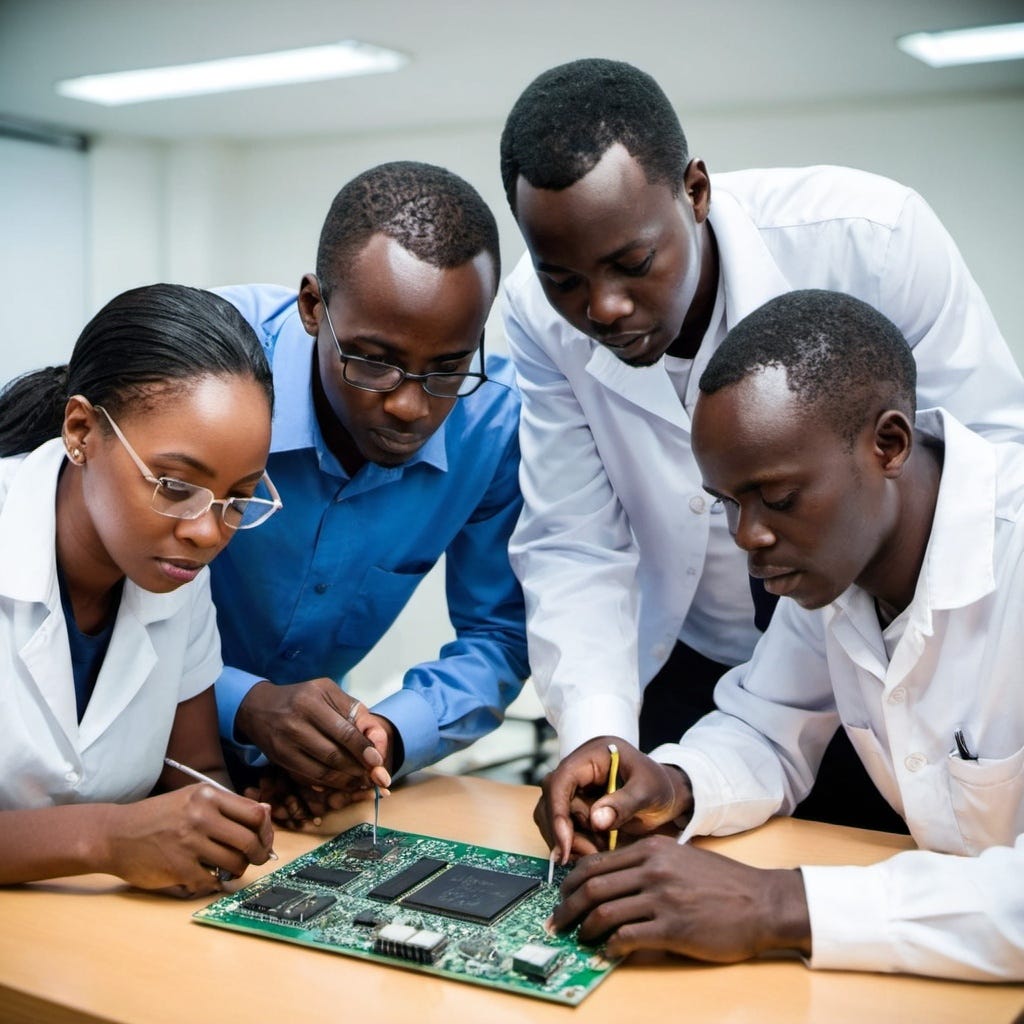Chips for Autonomous Machines: Semiconductor IP and its relation to AI edge applications
A Summary of the Africa Deep Tech Community Talk by Tayo Adesanya
Dialog
This blog post summarizes the Africa Deep Tech Community talk given by Tayo Adesanya, co-founder, and CEO of Lola Vision Systems, a semiconductor chip design company focused on building chips for edge devices.
The conversation centered around the concept of chips designed specifically for autonomous machines at the network edge, and how these chips relate to the development of artificial intelligence (AI) applications. Tayo spent time sharing some of the work being done by Lola Vision Systems as well as the opportunities in the space.
The Chicken and Egg: Energy Consumption vs. Technological Advancement
The discussion began with a question about the balance between technological advancement and energy consumption. Adesanya acknowledges the concern that the immense computational power required for AI development might not be sustainable. He highlights the vast difference in energy usage between a simple Google search and an OpenAI chat prompt, pointing out that cloud-based AI requires significant data transfer and processing, resulting in high energy consumption.
The Sustainability Debate: Energy Consumption of AI Models
Another key topic was the sustainability concerns around AI, particularly the high energy consumption of training large models like GPT-3. Tayo highlighted the need to push for more energy-efficient hardware and techniques like model pruning and quantization to reduce computational load.
Edge Computing: A Sustainable Solution
Adesanya proposes that chips designed for edge devices offer a more sustainable solution. These chips would process data locally on the device itself, eliminating the need for constant communication with data centers. This approach significantly reduces energy consumption while potentially offering even higher efficiency due to not being limited by cloud data center capabilities.
Key Questions and Considerations
Responsible AI Development: The conversation highlights the importance of responsible AI development, with a focus on minimizing energy consumption through the use of efficient chip design.
Shifting the Paradigm: Adesanya emphasizes the need for a paradigm shift in chip design, moving away from general-purpose chips towards application-specific designs that prioritize efficiency for battery-powered devices. This is especially crucial for autonomous systems with limited power supplies.
The Future of AI and Chips: The discussion acknowledges the ever-increasing demand for efficient AI chips and the potential need for alternative energy sources to support this growth.
Uniqueness of Edge AI Chips
The conversation highlights several key considerations for designing chips specifically for edge devices:
Lower Power Consumption: Edge chips need to be designed for maximum efficiency to operate on battery power for extended periods.
Focus on Specific Applications: Unlike general-purpose chips, edge chips should be designed with specific use cases in mind, allowing for targeted optimization.
Local Processing: Edge chips should be able to process data locally on the device, minimizing the need for data transfer and cloud dependence.
Education and Awareness
Tayo Adesanya, Ola Fadiran, and Collins Agu stressed the need to create awareness and educate African engineers on chip design and sustainability. They highlighted some of the work being done by companies like Chip Lab and TD4Pai Hub in this area.
Conclusion
The moderator thanked Tayo Adesanya for his invaluable insights and contributions. He also expressed gratitude to all participants and encouraged the continuation of such conversations to drive change and innovation in Africa's tech ecosystem.
The Africa Deep Tech Community session with Tayo Adesanya provided valuable insights into the development of chips for edge devices and their role in the future of AI applications. The focus on responsible AI development through efficient chip design paves the way for a more sustainable future for autonomous machines at the network edge. The conversation also highlighted the importance of fostering a community of African chip designers to create solutions tailored to the specific needs of the continent.


